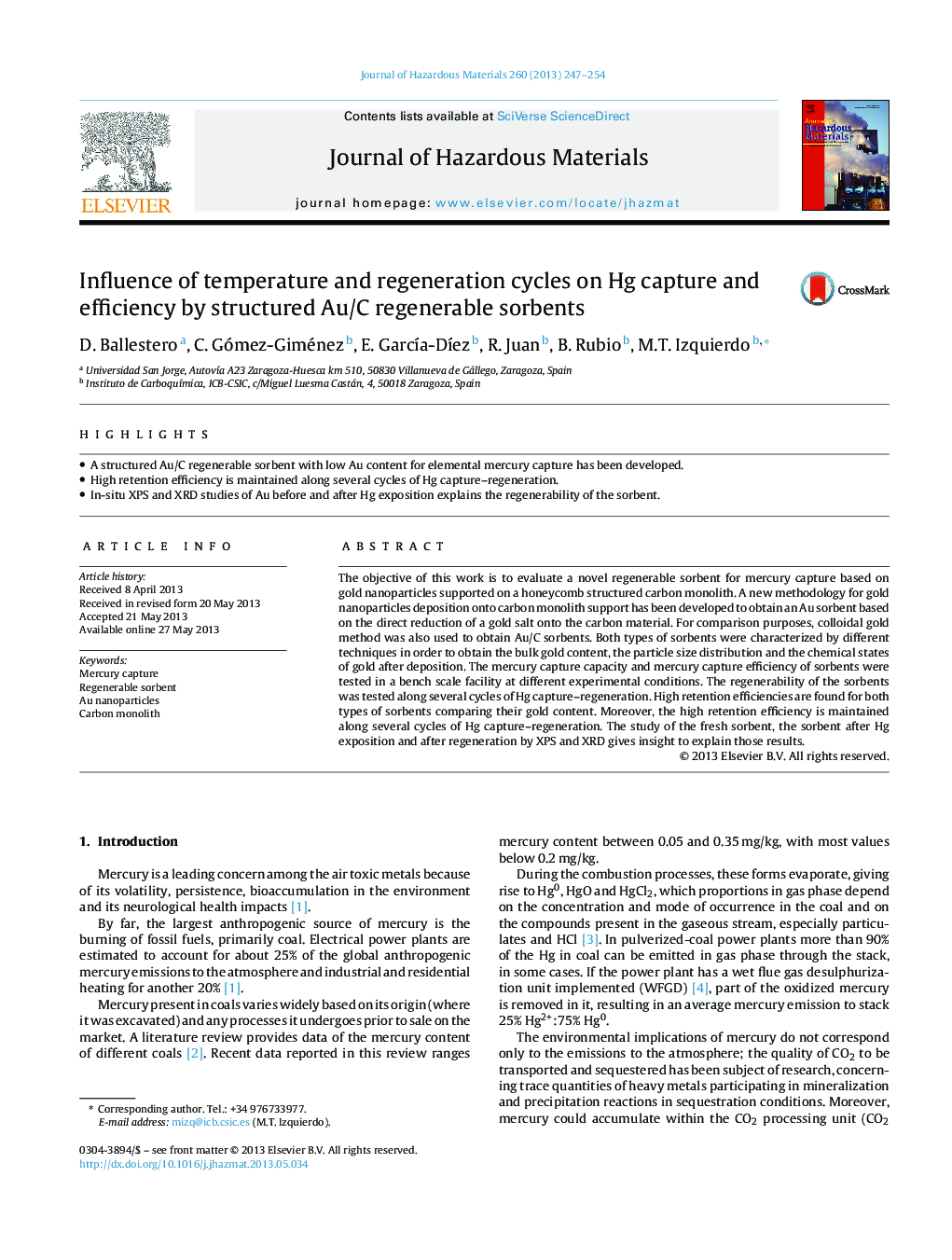| Article ID | Journal | Published Year | Pages | File Type |
|---|---|---|---|---|
| 6972381 | Journal of Hazardous Materials | 2013 | 8 Pages |
Abstract
The objective of this work is to evaluate a novel regenerable sorbent for mercury capture based on gold nanoparticles supported on a honeycomb structured carbon monolith. A new methodology for gold nanoparticles deposition onto carbon monolith support has been developed to obtain an Au sorbent based on the direct reduction of a gold salt onto the carbon material. For comparison purposes, colloidal gold method was also used to obtain Au/C sorbents. Both types of sorbents were characterized by different techniques in order to obtain the bulk gold content, the particle size distribution and the chemical states of gold after deposition. The mercury capture capacity and mercury capture efficiency of sorbents were tested in a bench scale facility at different experimental conditions. The regenerability of the sorbents was tested along several cycles of Hg capture-regeneration. High retention efficiencies are found for both types of sorbents comparing their gold content. Moreover, the high retention efficiency is maintained along several cycles of Hg capture-regeneration. The study of the fresh sorbent, the sorbent after Hg exposition and after regeneration by XPS and XRD gives insight to explain those results.
Related Topics
Physical Sciences and Engineering
Chemical Engineering
Chemical Health and Safety
Authors
D. Ballestero, C. Gómez-Giménez, E. GarcÃa-DÃez, R. Juan, B. Rubio, M.T. Izquierdo,
